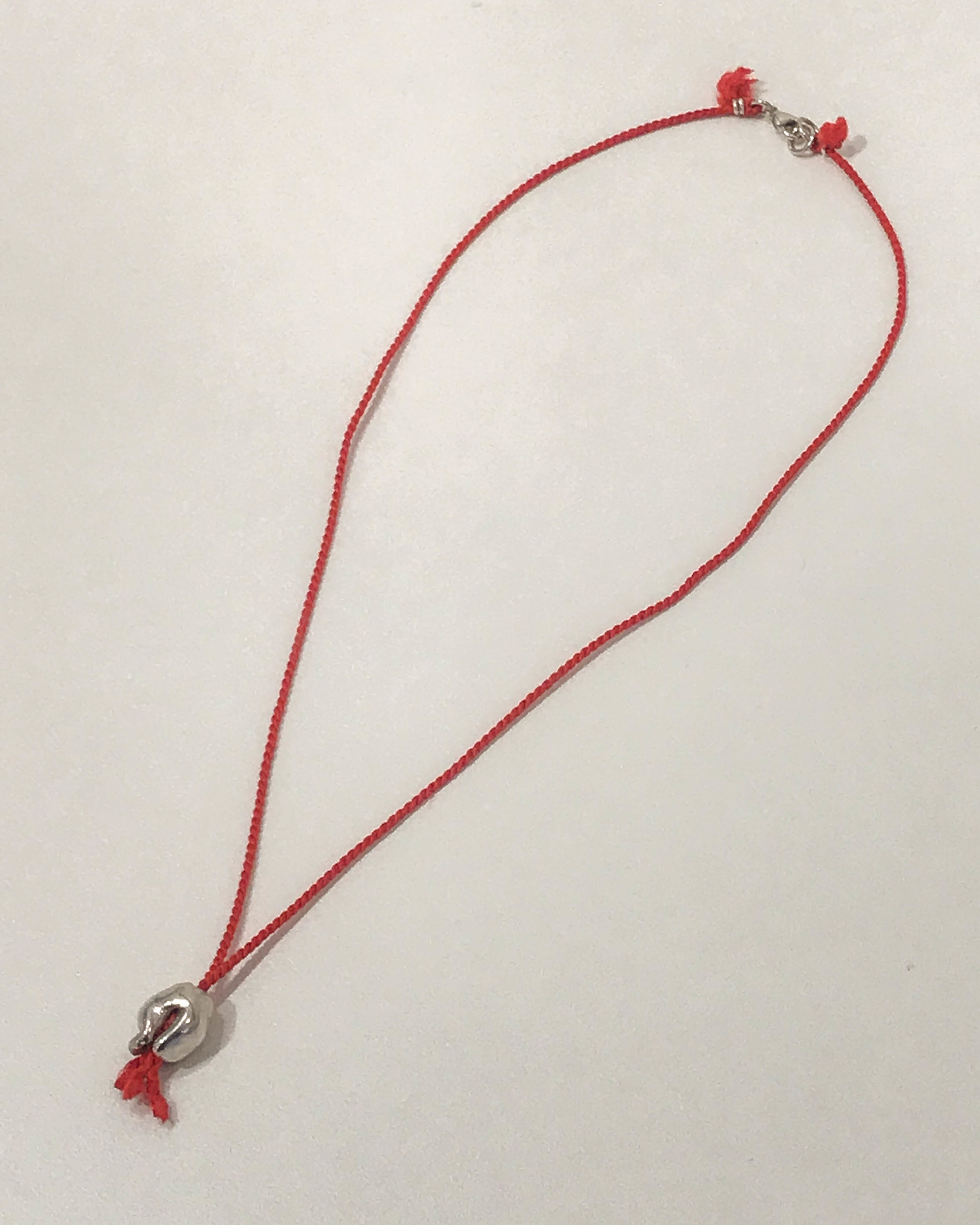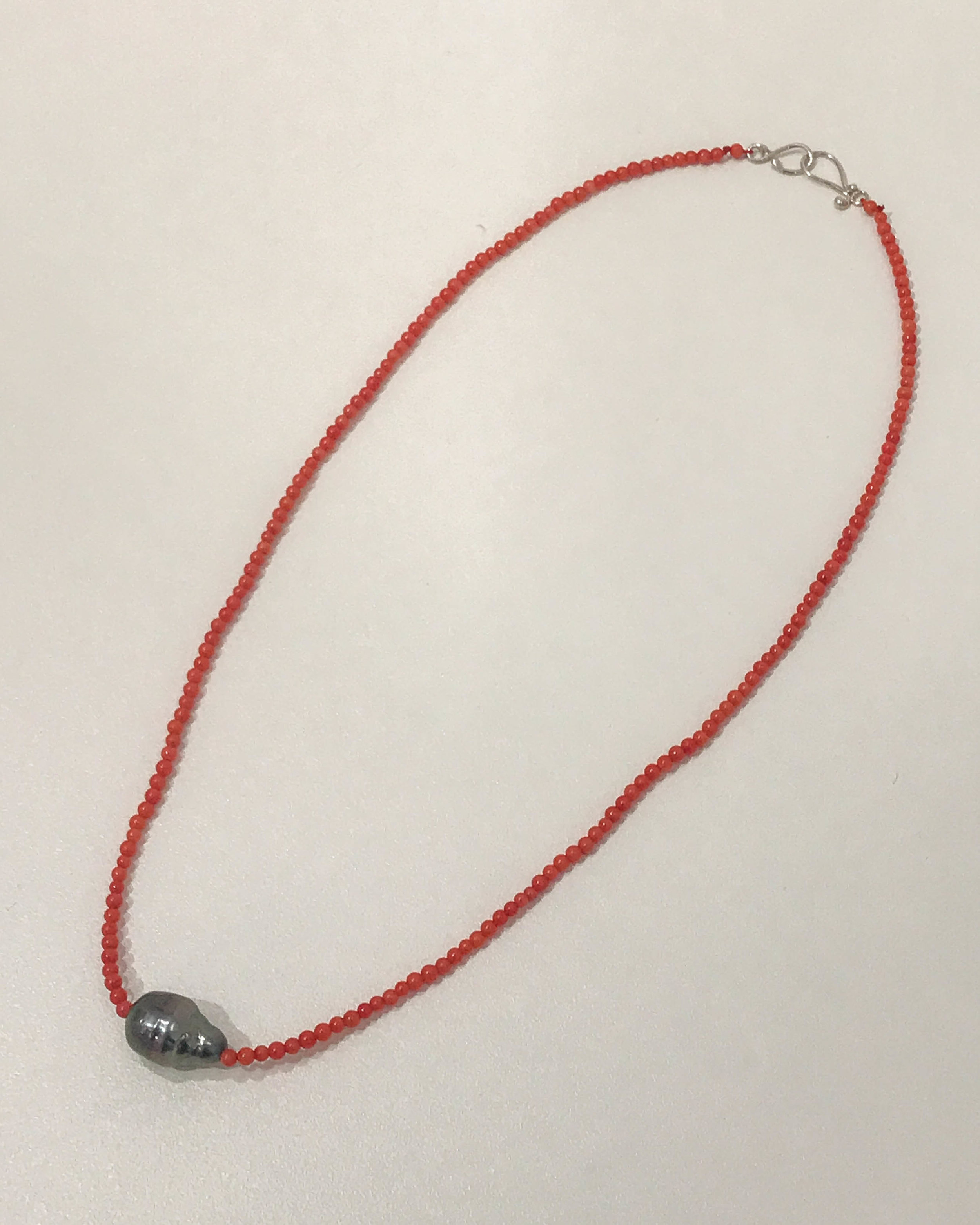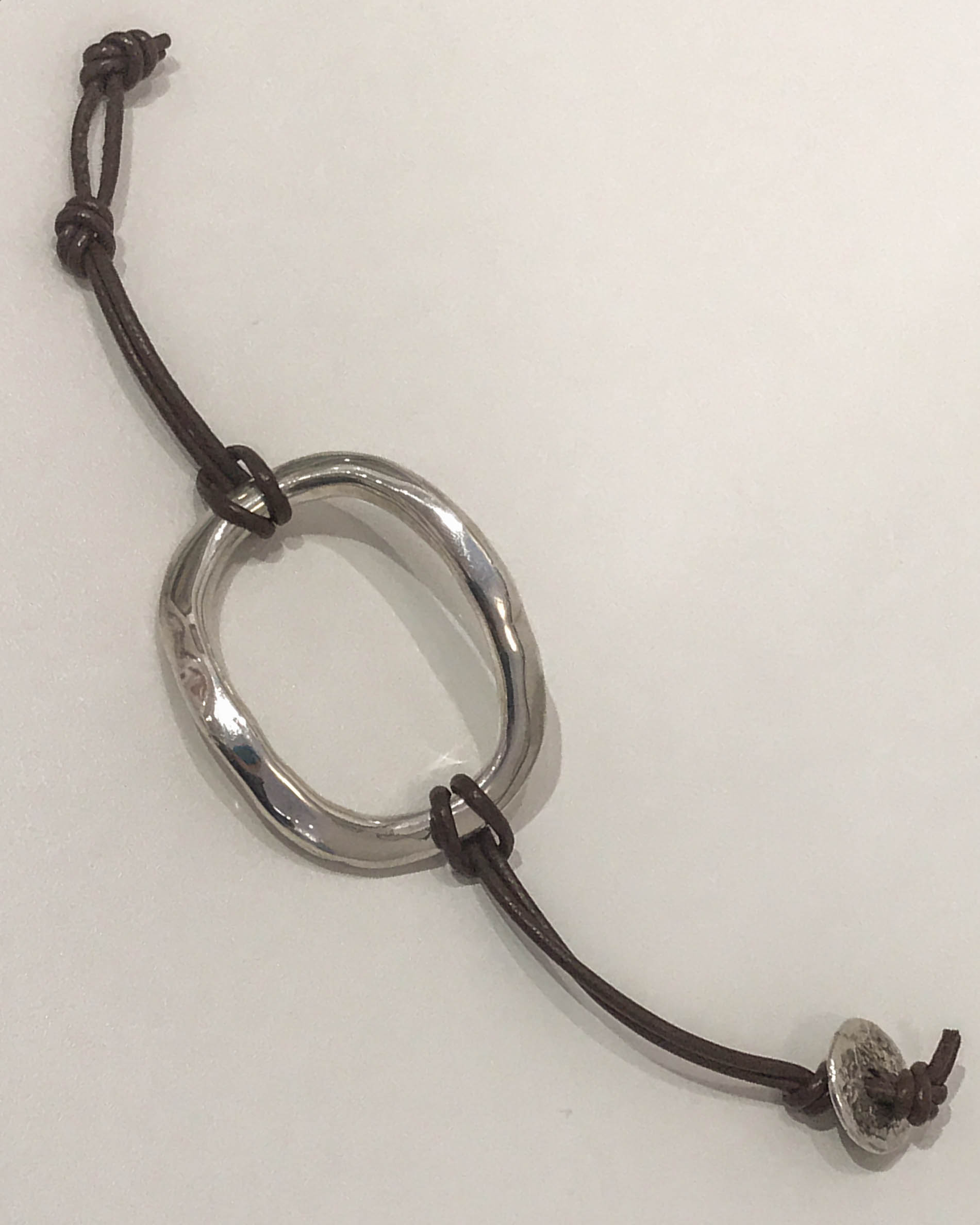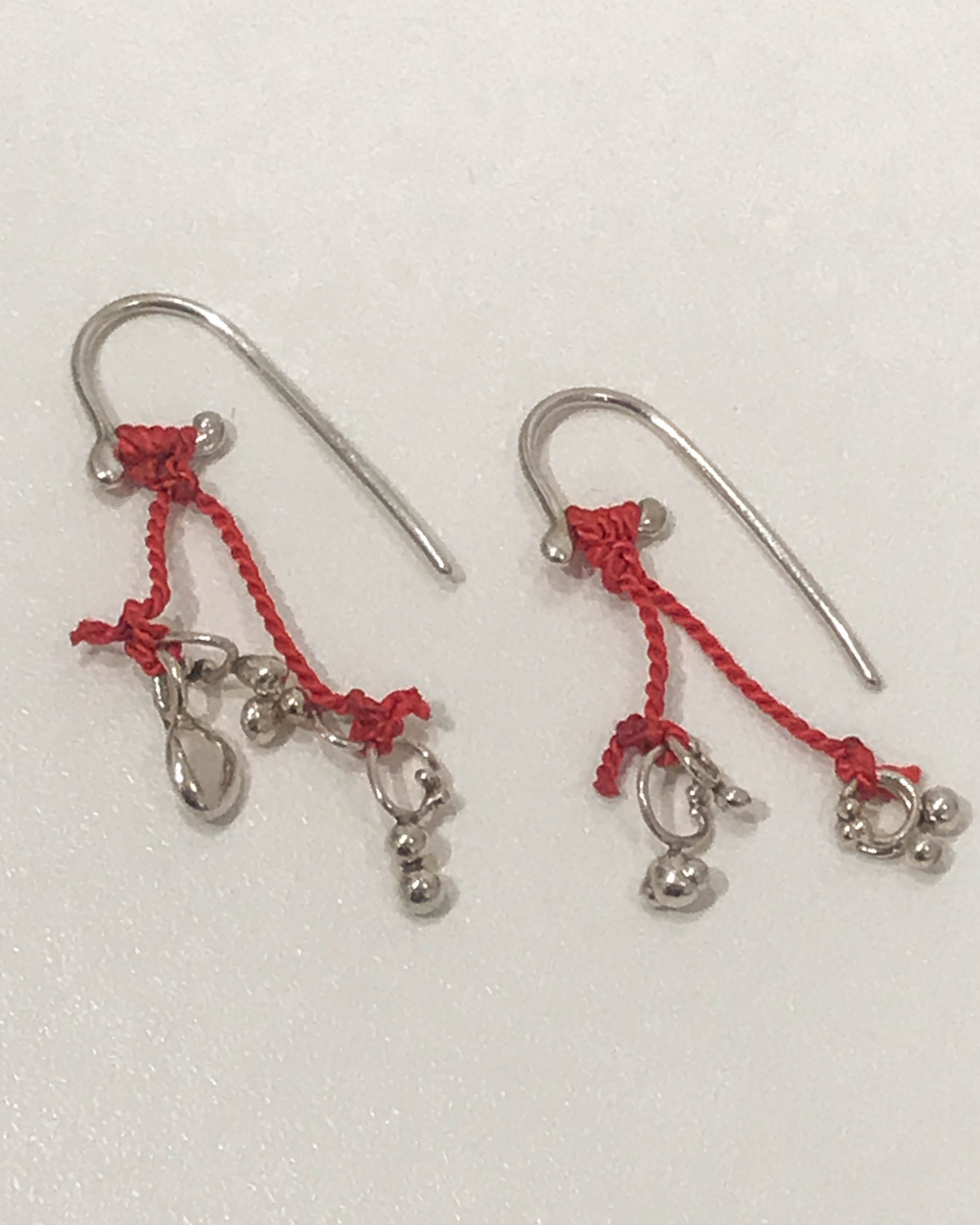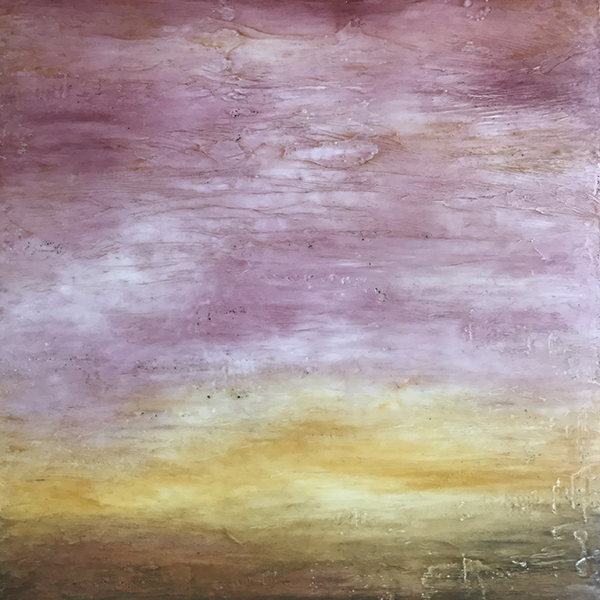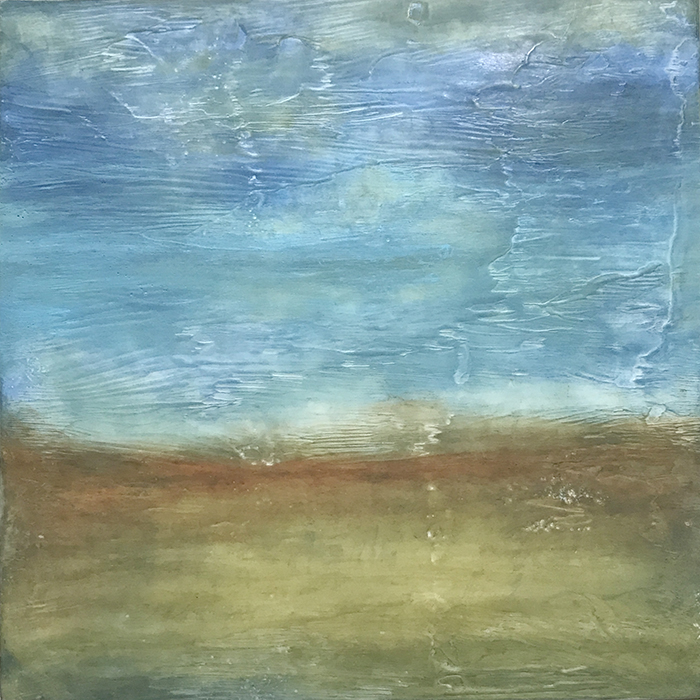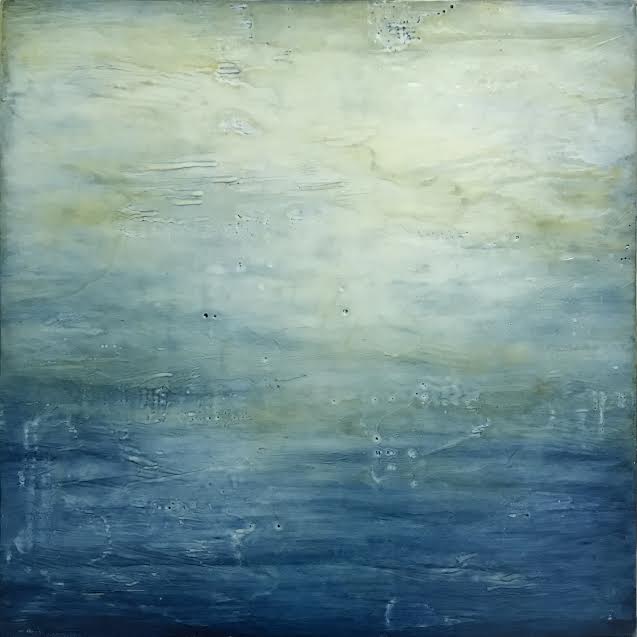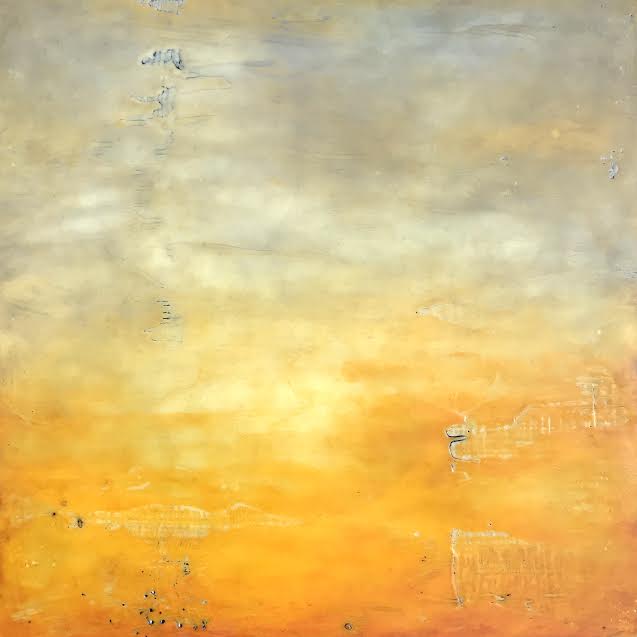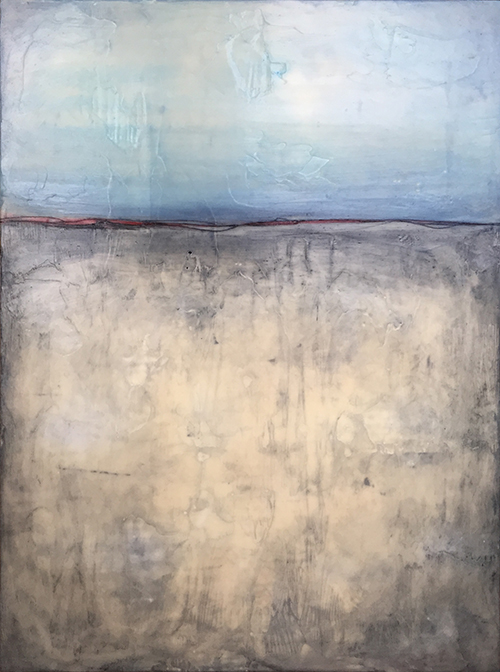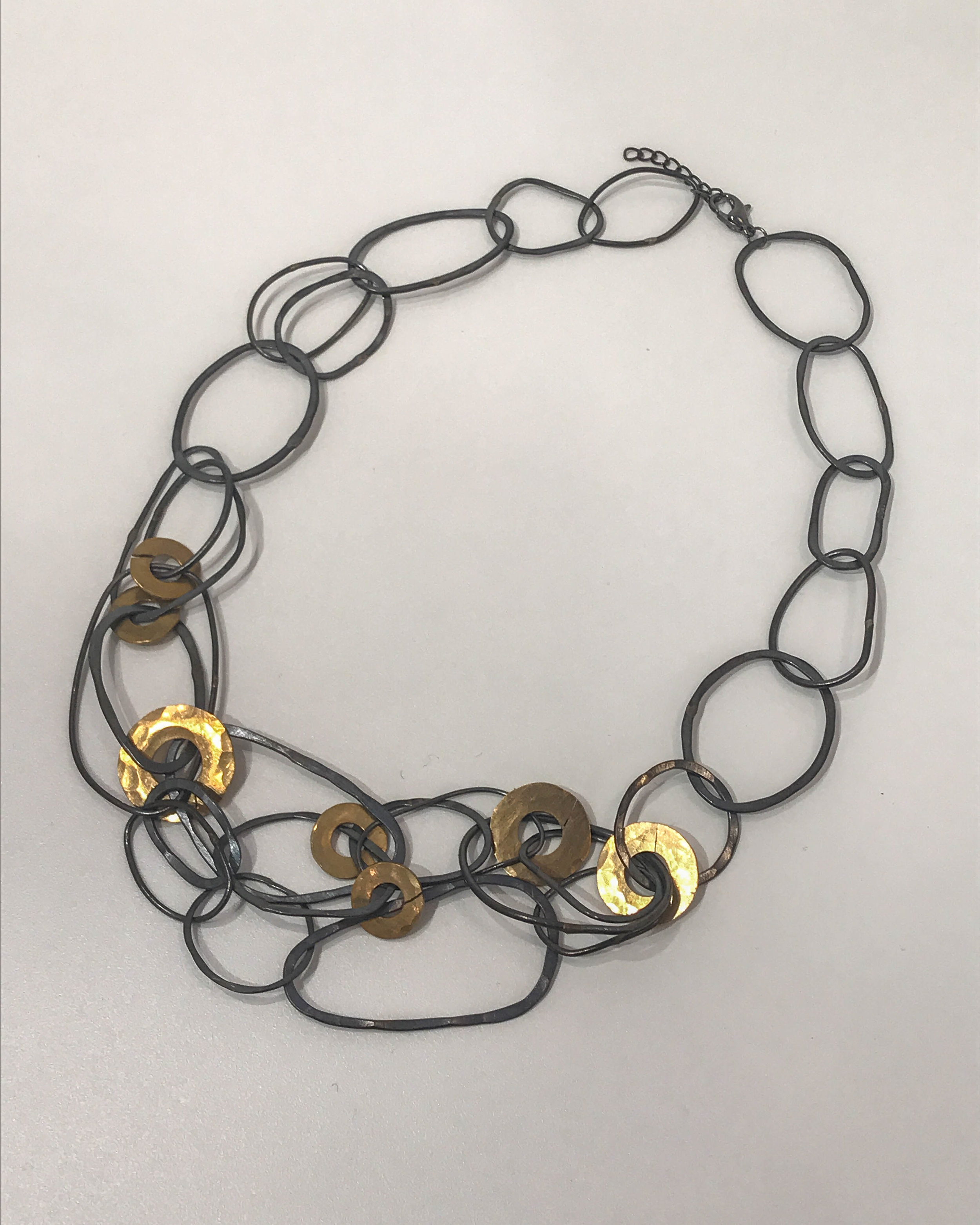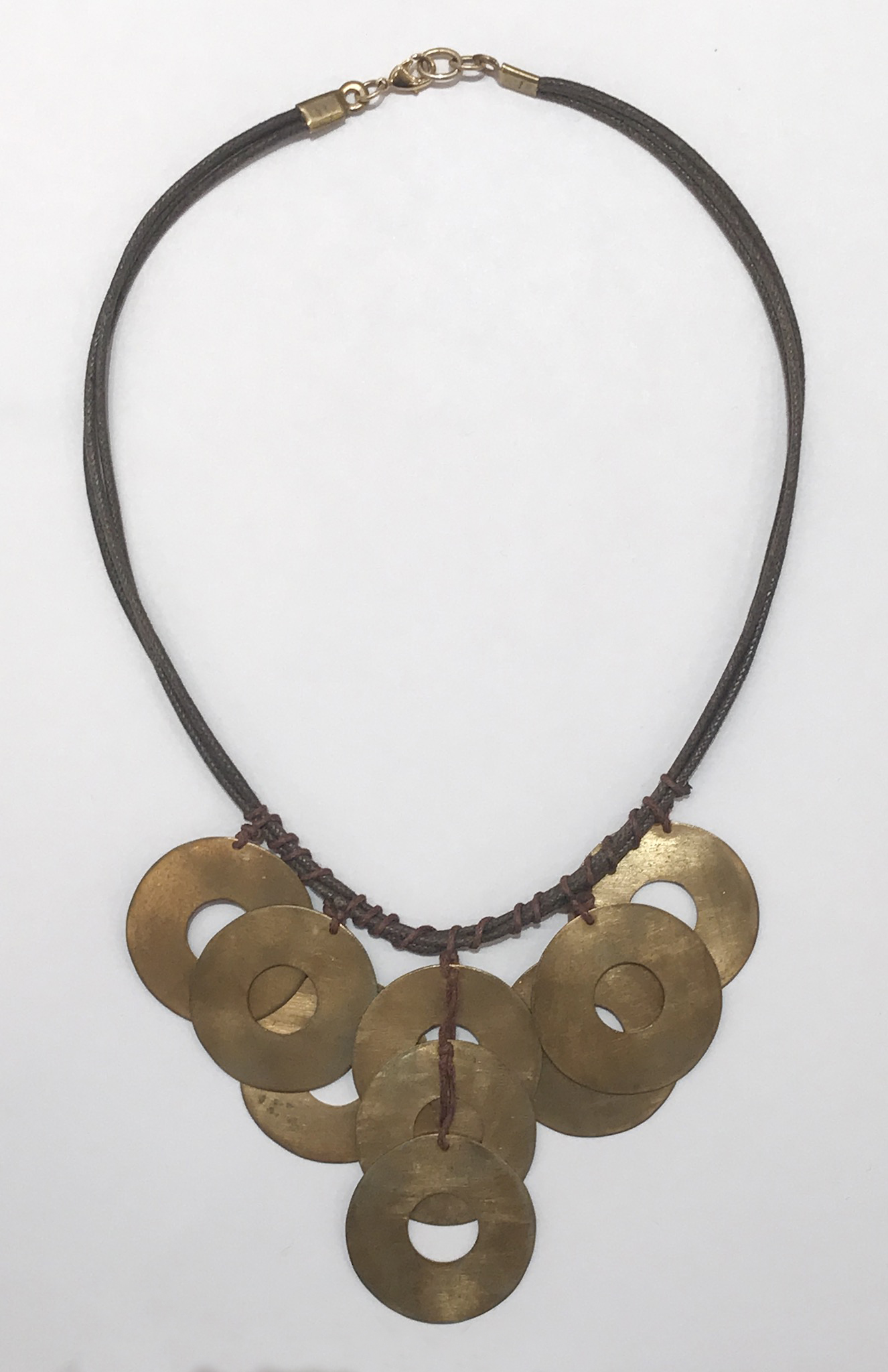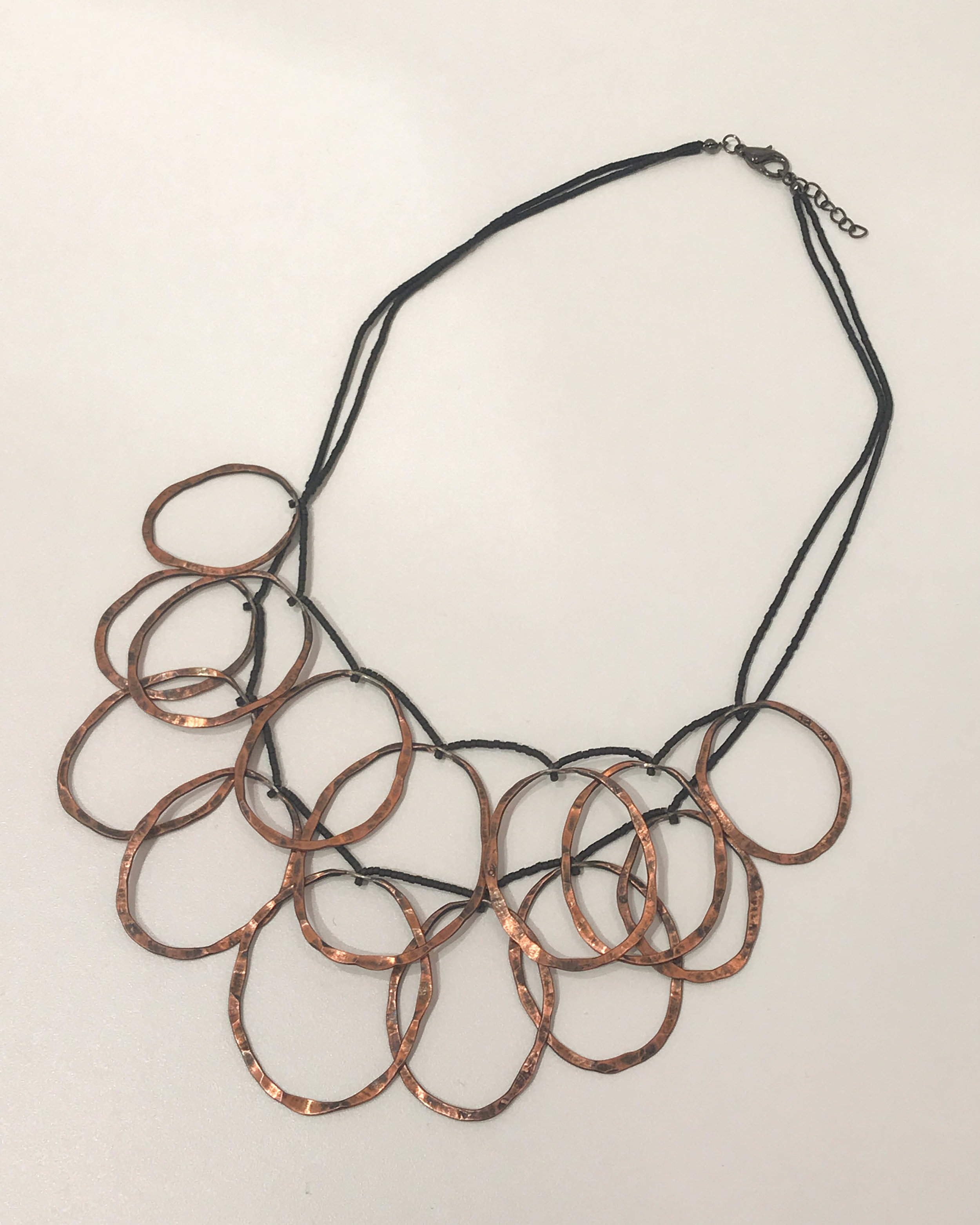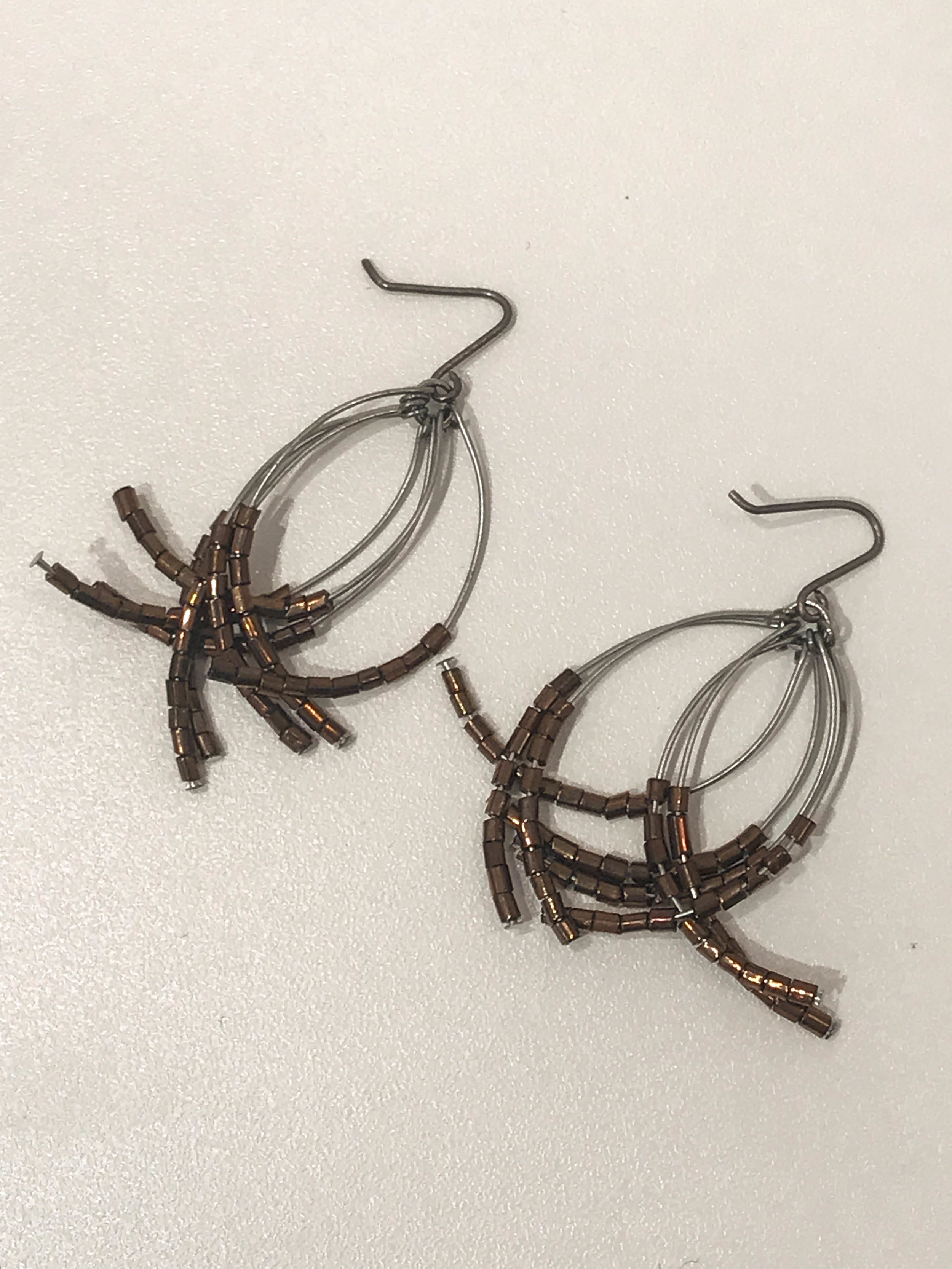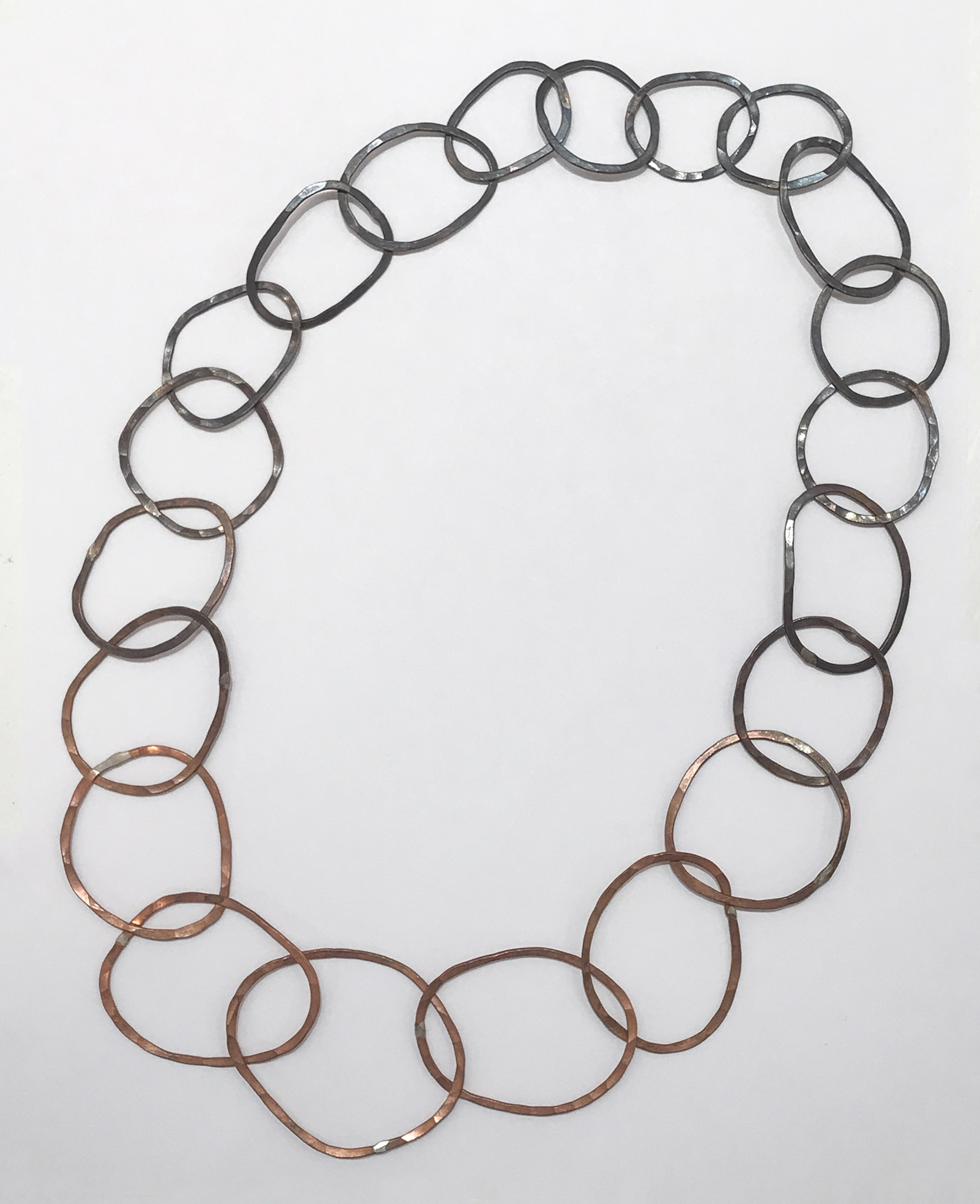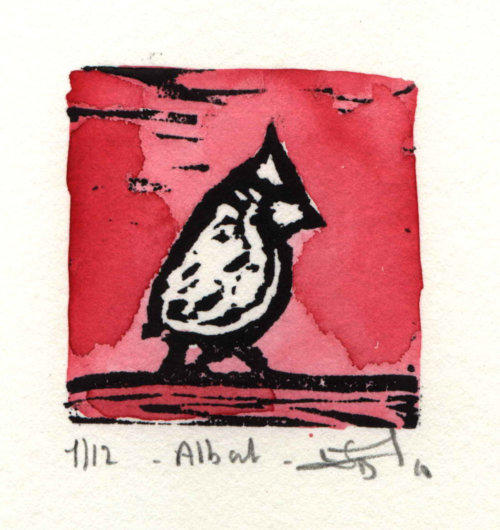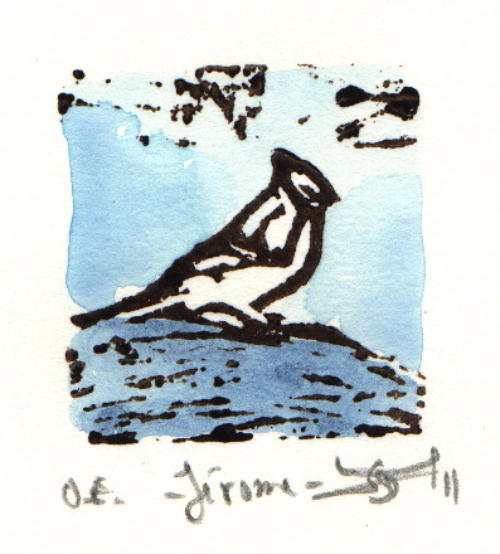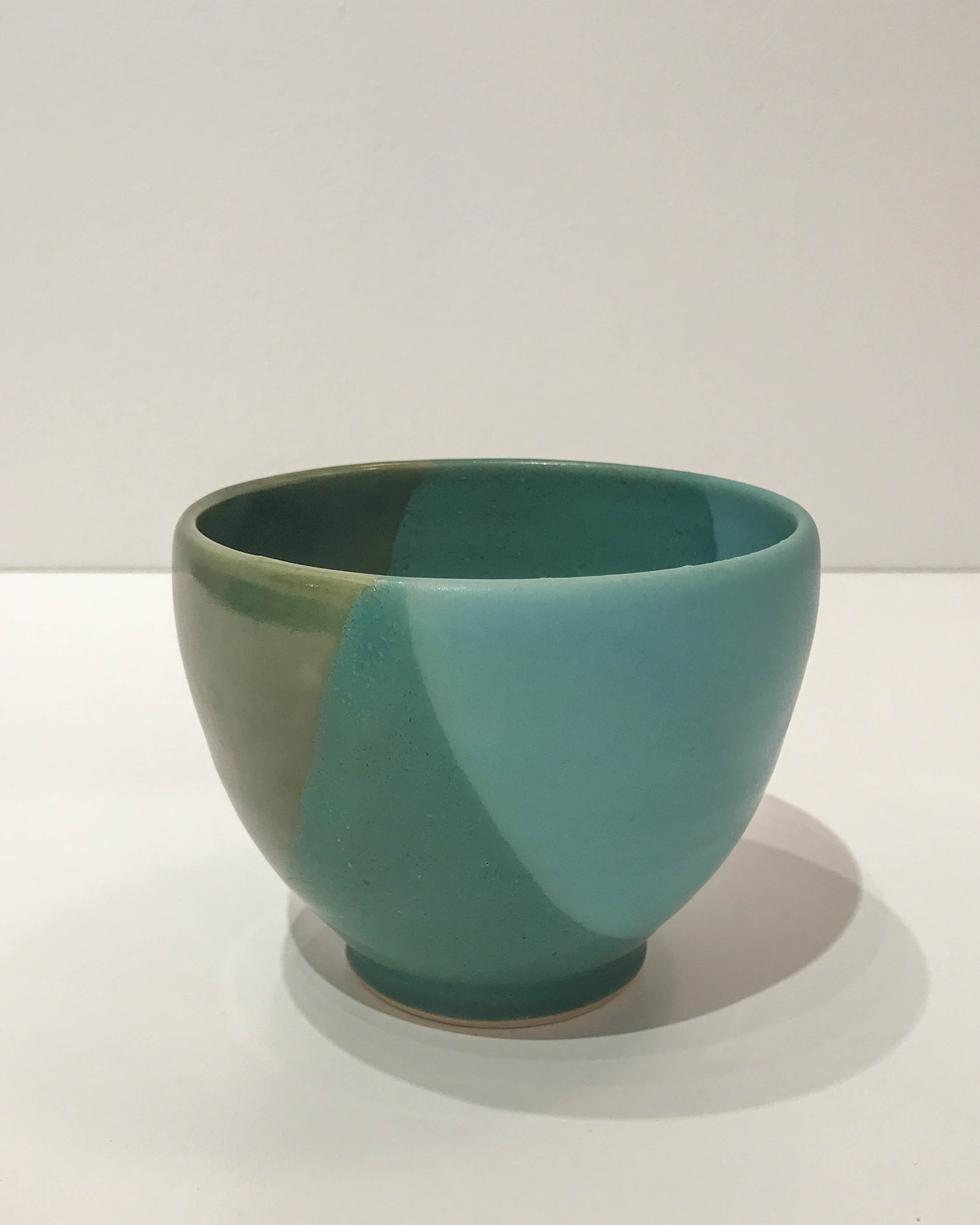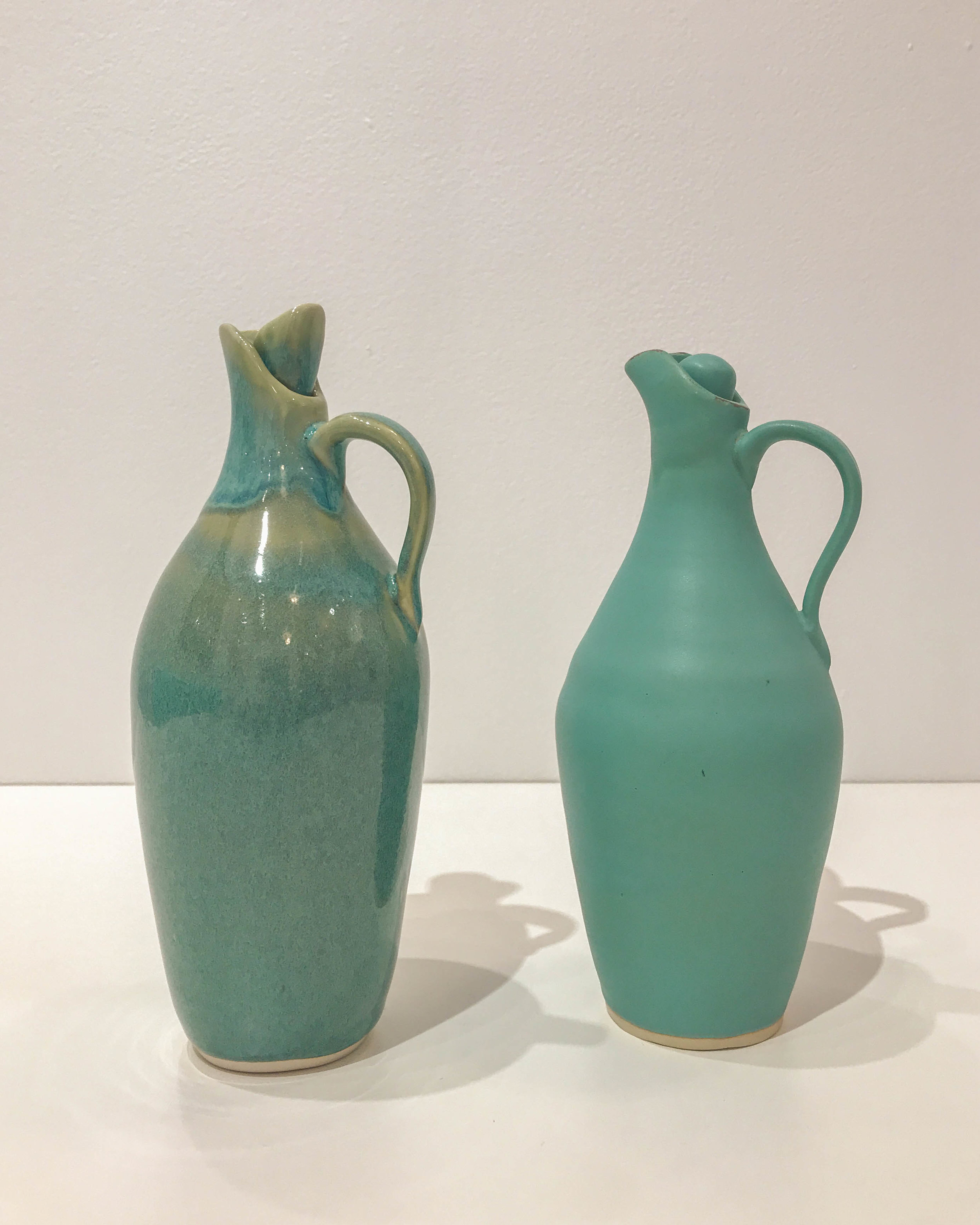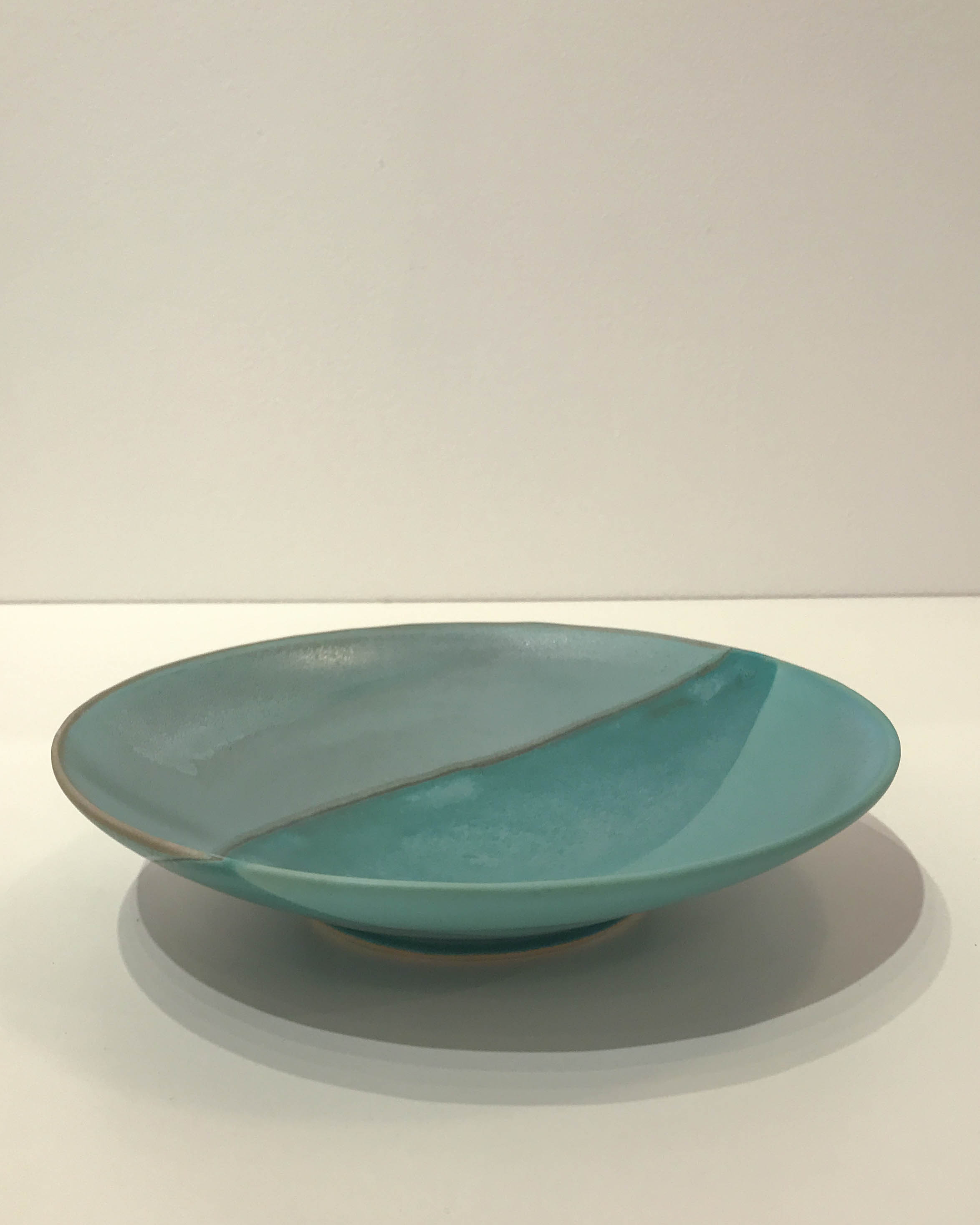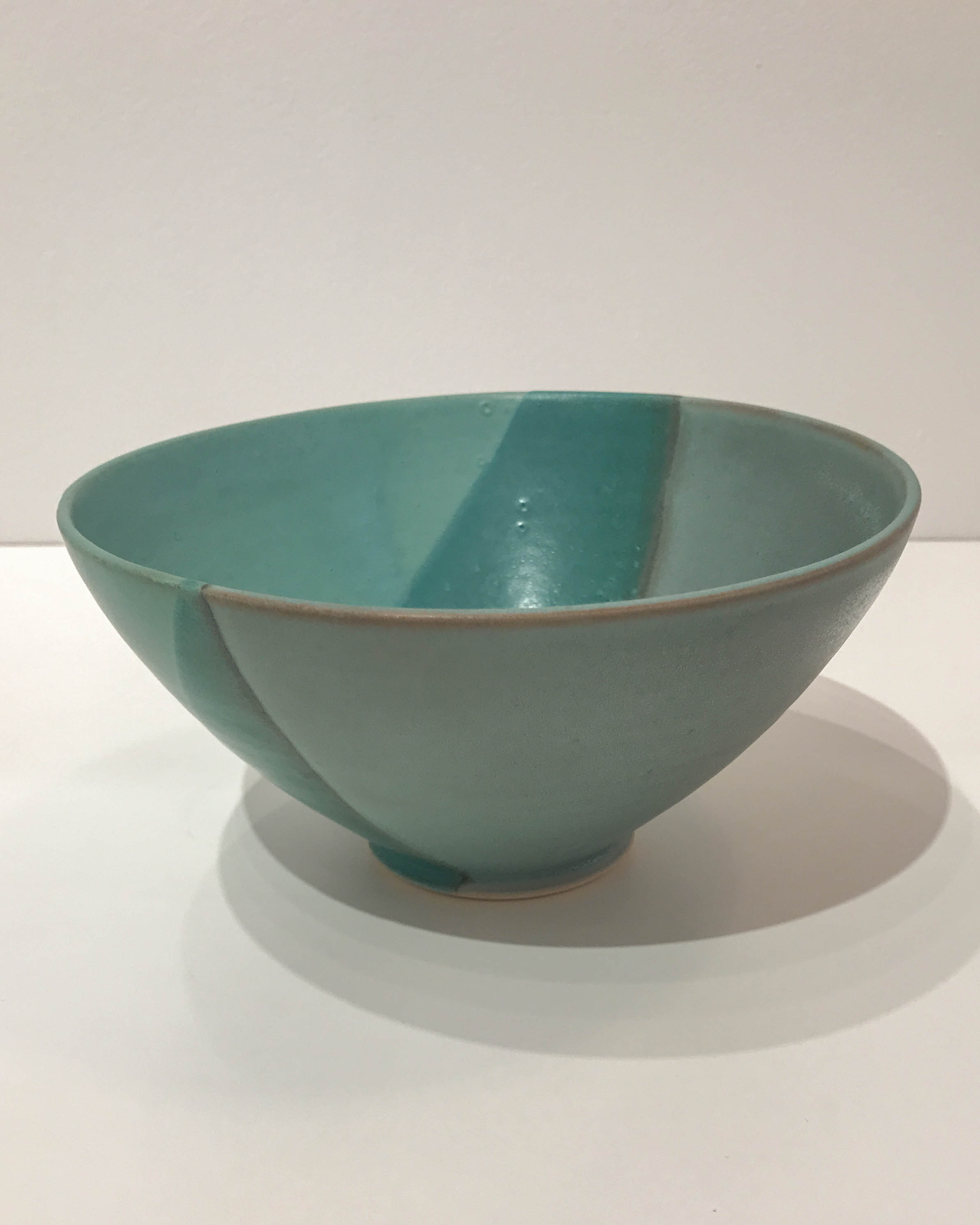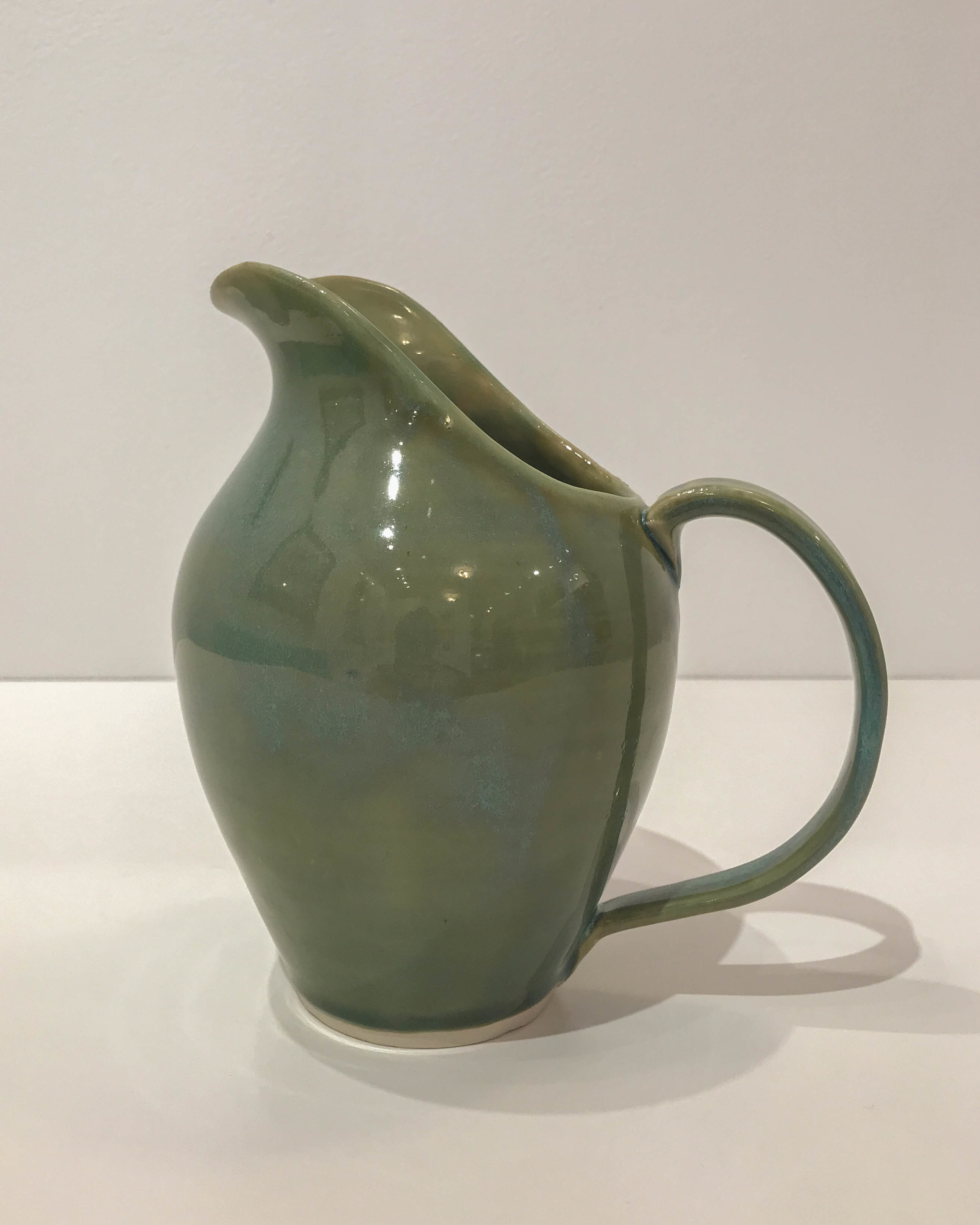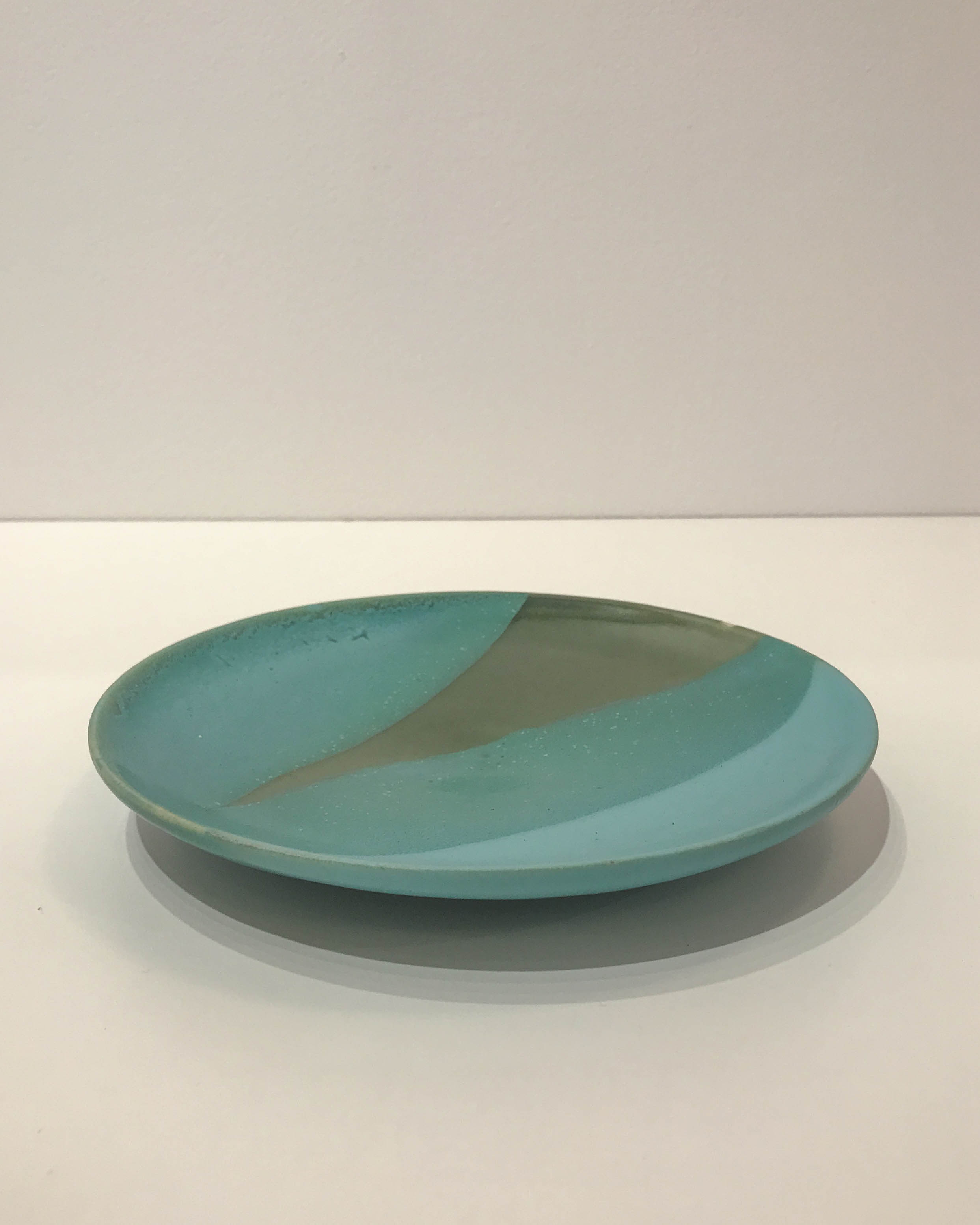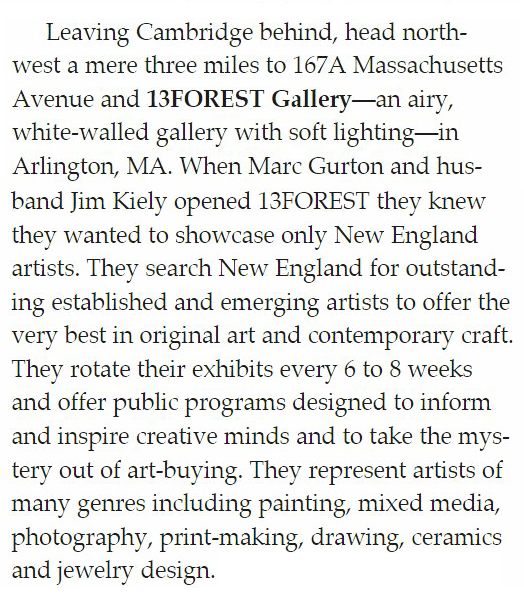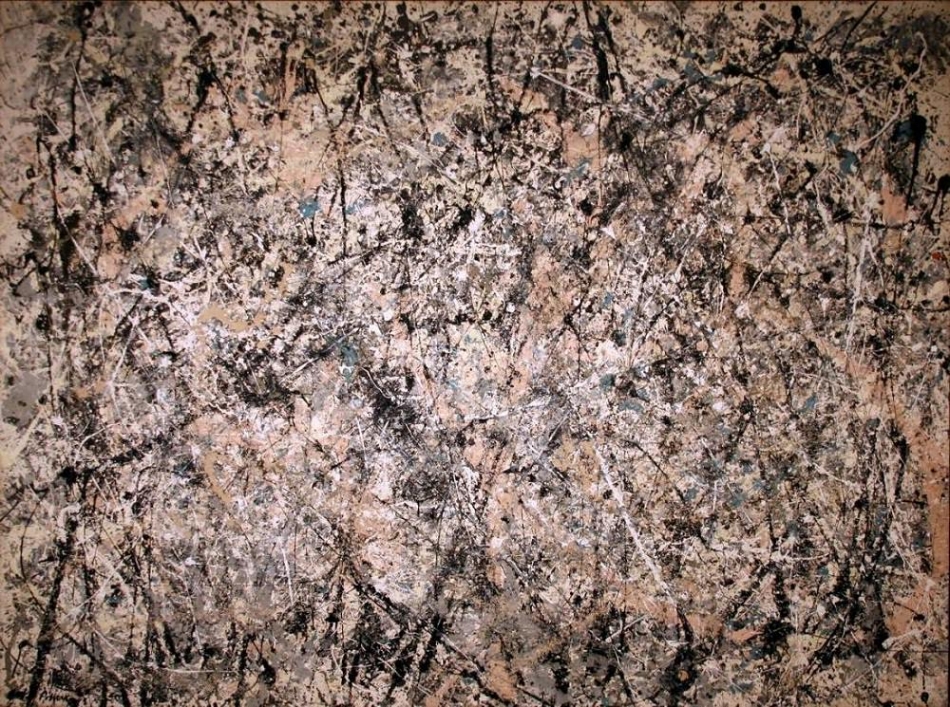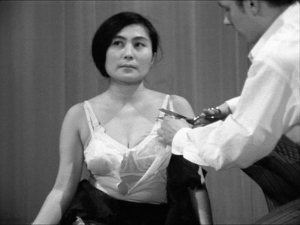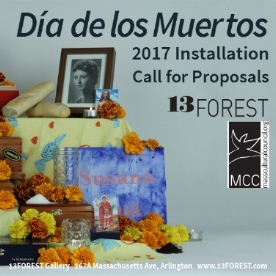As part of our current exhibition 13WOMEN, on view from March 17 to May 11, 2018, we asked the exhibiting artists to write statements about the work they contributed to the show. Each artist took a slightly different approach to the statement, discussing her inspiration, process, or artistic goals. We were so impressed with the thoughtfulness and insight of these statements that we wanted to share their words here.
Coco Berkman, Under the Sky, reduction linoleum print
Coco Berkman
I created this piece for a show whose theme was “The Individual in the Community.” The initial sketch of a woman was torn from my sketchbook. I added elements of a peopled landscape. The main character in this piece looks fragmented and broken to me. The plant imagery on her clothing and the simple colors bring a sense of peace and order to her inherent confused state.
The place where I now live is a beautiful historic fishing town, Gloucester, Massachusetts. I took a train here from Boston 36 years ago when I was 26, with my two small children. I was escaping from an abusive situation. I love my adopted city but perhaps because I wasn’t born here, I’ve never felt that Gloucester was my real home. I’ve met many people who’ve immigrated here from all over the country and all over the world. What we have in common is our love for this place. We are all daily striving to create a home and a sense of community, Under the Sky.
Caitlin and Nicole Duennebier, Infestation of Hanging Garden, acrylic and ink on paper
Caitlin and Nicole Duennebier
Caitlin and Nicole have been working on projects together since childhood. Although each artist has a distinct style, they combine their talents to create a shared environment within their work. In Infestation of Hanging Garden, Caitlin's apprehensive worms take residence in Nicole's detailed flora and baroque imagery. The infestation is more of a symbiotic relationship that encourages the other to thrive within the sisterly environment.
Catherine Graffam, Self-Portrait with Two Eggs and a Handkerchief, oil on panel
Catherine Graffam
Self-portraiture is a way of cathartically processing my emotions as well as an important means of reflecting on life experiences. I use myself as a vehicle for storytelling as well as regaining agency over my body as a queer trans woman.
By continuing the tradition of oil painting, I am engaging with a medium that has objectified women since its conception. Placing myself as the subject in a tradition informed by a voyeuristic history contrasts the stigma of trans bodies that is woven into the fabric of society. The act of recontextualization confronts the viewer with its position in and out of the art world, and humanizes queerness by expanding beyond the physical.
Boriana Kantcheva, Earth, gouache on clay board
Boriana Kantcheva
Earth and Water are part of a new series titled Elements: Earth, Water, Fire, Air. In the last few years I have worked on a number of paintings that focused on the feminine aspect of the divine. The Goddess religions offer a different approach to nature and spirituality that is inclusive, mindful and lacks the oppressive qualities of patriarchal religions.
I was greatly inspired by the 1970s efforts of feminist artists to reclaim the Great Goddess. From the artistic practices of these artists to the archeological discoveries and the feminist approach to study of the pre-patriarchal Goddess civilizations, women were able to recover some of their lost history. In addition, there is a close link between the Goddess traditions of today and the growing awareness of the ecological devastation of our planet. Each painting in the series focuses on a specific element used in Goddess spiritual practices as a symbol of power and a connection to the natural world.
Asia Kepka, Bridget & I: Pool, c-print
Asia Kepka
Interesting things happen when you are not paying attention. You are examining the world through your camera, capturing people around you, learning about them, telling their story and slowly you realize you are starting to tell your story.
During my decade long project Bridget and I, I found myself exploring my life through a series of self portraits taken alongside my mannequin named Bridget. While in the process of creating the photos, I realized that this was my visual journal, my mirror in which my life was reflected.
At some point I no longer needed another person to tell my story. It was okay to become vulnerable and I was ready to open myself up even deeper. The images you see are the intimate and honest reveal of myself.
They tell the story of my life – a woman, immigrant, gay artist. Some images are reflections of my mother, my grandmother, my best friend Goshka who passed away 12 years ago. They are stories of love, endurance, loss and changes.
C.J. Lori, Seven Sisters, oil on canvas
C.J. Lori
When I look at most trees, I find a human form in the shapes of the trunk and branches. When I look at a birch tree, my focus shifts to the patterns on the bark. Eyes, skin, mouths appear, some in conversation with others in their stand of birch.
Drawing connections between human features and the elements of landscape – rocks, trees, clouds, water – has always been central to my artistic practice. It both satisfies my imagination and expresses my desire that we see ourselves not as separate from, but as part of the living world around us.
Mary O'Malley, Pollinator Mandala #1, gouache and ink on paper
Mary O'Malley
My work begins with a fascination with nature, combined with a love of pattern, decoration, and ornamentation. In this series, I explore pollinating species, from hummingbirds to moths, bees to beetles, as well as other beneficial insects and the plants they pollinate. Many pollinator species are threatened with extinction, which will have deep and troubling consequences for biodiversity and our own sustainability.
The mandala is a guidance tool used in various spiritual traditions to aid meditation or trance. I use the form of the mandala, repeating shapes and motifs to create a meditative experience for the viewer to reflect on these essential creatures that are so vital to our ecosystem, and ultimately, our survival.
Nancy Popper, Maid of Orléans, etching, drypoint, and chine-collé
Nancy Popper
My prints focus on the tension between figures as they come into contact with one another. The tension is the simple push and pull of interaction that happens in any relationship – between friends, lovers, parent and child, even strangers. My intention is for the viewer to make associations with their own personal experience relating to the connection/disconnection of the abstracted human forms and the symbolism represented by the objects they hold.
Karla Quattrocchi, At the Window, oil, acrylic, crayon, tar, pastel, rice paper, paper, tape, fabric, sequins on canvas
Karla Quattrocchi
In my work I incorporate the use of multiple mediums including oil, acrylic, pencil and tar. Each composition uses a structured amount of space and adheres to a flat picture plane. I strive for subtle yet direct color variations and the restrained use of marks and line. I add the suggestion of texture and form with materials and found objects that decorate and define the painting’s space. The placement of each object is deliberate - yet uneven. It is through this inconsistency that I promote the idea of assemblage, space, meaning and intent.
In my portraits, by separating and defining this space, I encourage the focus to come to center and deliberate solely on the model. Her needs, her wants - all that she knows - is what I urge the viewer to see.
I hope for the hint of a hidden dialogue to be felt, the possibility that she is sharing secrets and imposing the kind of emotion that only unspoken exchanges can evoke.
Allison Maria Rodriguez, One Girl's Fantasy, digital video still on metal
Allison Maria Rodriguez
Funded in part by a grant from The CreateWell Fund, my current in-progress project entitled Legends Breathe explores the power of creativity and the imagination in overcoming traumatic experiences. Based on interviews with different female-identified artists about childhood fantasies that assisted them in overcoming trauma or extreme circumstances, this project speaks to a strategy and methodology of survival activated through the power of creativity.
Each video, which will eventually be installed together as an interactive installation, explores these individual fantasies, highlighting their uniqueness, their commonalities, and their inherent power. One primary element evident in all the fantasies is a harvesting of strength and transcendence through a deep connection to the natural world. The work is populated by endangered species and threatened habitats, conveying a link between the trauma and healing of our planet to that of the individual. Presented in 13WOMEN are two of the pieces which will be included in the final large-scale installation: The Lady and the Bear and Water Mythologies.
Amy Ross, Mushroom Patch, collage on paper
Amy Ross
My work as an artist is informed by a lifelong interest in folklore and mythology and a deep reverence for nature. I look at the phenomena of the natural world through the lens of story and imagination. In the studio, I take a “mad scientist” approach to art making: I create hybrid creatures by morphing together humans, animals and plants.
In my drawings and collages, I examine the interconnectedness of all life and the vulnerability that we all share. I’m interested in the connection between humans and animals and the ways in which they are entwined. Similarly, I imagine ways that plants and animals can be conflated. The hybrid creatures I create arise from a blurring of permeable boundaries: those between humans and animals, flora and fauna, predator and prey, food seeker and food source, and the human and spirit realms. I see the creatures I paint and collage as mediators between worlds, inhabiting a hypothetical, plausible, other world constructed in the art studio yet solidly rooted in nature.
Dorothea Van Camp, Flyers (MM 1822), viscosity monoprint
Dorothea Van Camp
Surrender
For decades, never wanting to be tied to a printing press, my pursuit of making printed marks has taken me through all manner of hand-made impressions, transfers and stenciling. I have been screen-printing into my paintings for the past ten years, leaving me with a heavy investment in more than sixty screens. Time, energy and ideas accumulated into my own language of mark making.
My mind is always working to come up with new ways to capitalize on this investment. Adding pressure + viscosity to the mix, has resulted in my total surrender to working on a press again.
Screen printing with thick, tacky ink onto a plexiglass plate + rolling over with a more juicy, fluid ink + hand working to my heart's content before cranking through the press = ever-surprising results.
Resistance + pressure = Printed prints <3
















